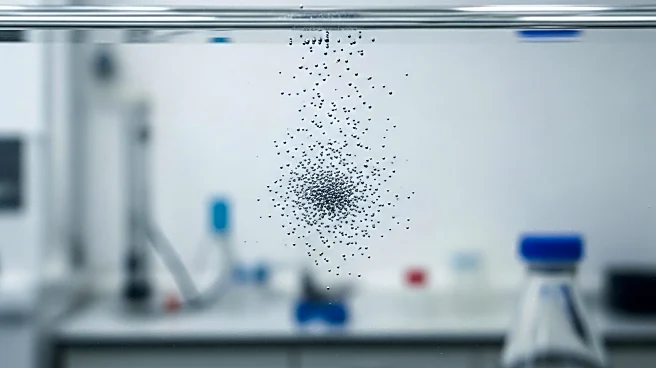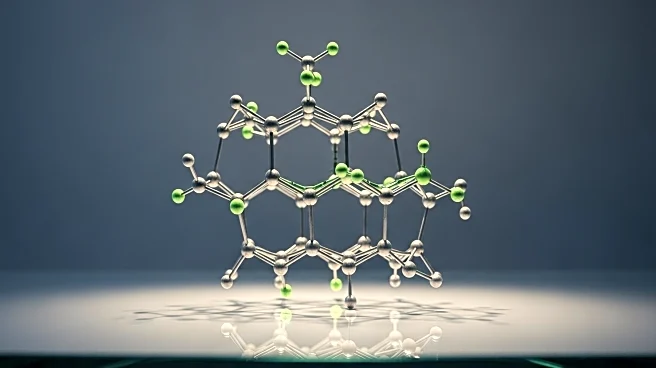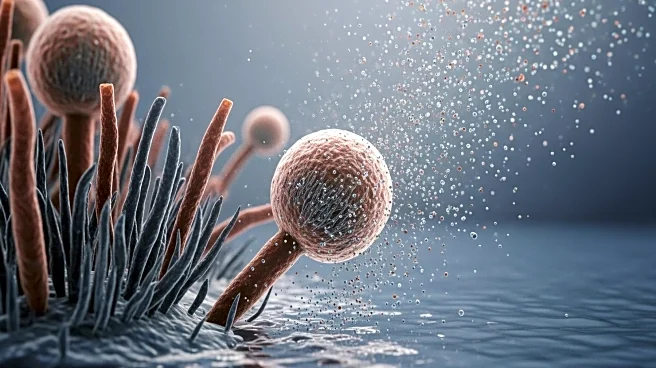What is the story about?
What's Happening?
A study has successfully biosynthesized green iron oxide nanoparticles (IONPs) using Aspergillus niger for the removal of heavy metals from industrial wastewater. The research utilized Plackett-Burman and Box-Behnken designs to optimize the myco-synthesis process. The IONPs demonstrated efficiency in removing metals like copper, iron, manganese, zinc, and chromium from synthetic and industrial wastewater.
Why It's Important?
Heavy metal pollution in industrial wastewater poses significant environmental and health risks. The use of myco-synthesized IONPs offers a sustainable and cost-effective solution for wastewater treatment. This approach could revolutionize the way industries manage waste, reducing environmental impact and improving compliance with regulations. The study's findings may encourage further research and development in green nanotechnology applications.
What's Next?
Further research is needed to scale up the production of IONPs and assess their long-term effectiveness in various industrial settings. Collaboration with industries and environmental agencies could facilitate the adoption of this technology. Regulatory frameworks may need to be updated to accommodate new bioremediation techniques. Stakeholders will likely explore partnerships to advance the commercialization of this technology.
Beyond the Headlines
The study highlights the potential of fungi in bioremediation, showcasing the intersection of biology and nanotechnology. Ethical considerations regarding the use of genetically modified organisms and the impact on ecosystems will be crucial in advancing this field. The development of green technologies aligns with global sustainability goals and the push for cleaner industrial practices.
AI Generated Content
Do you find this article useful?













